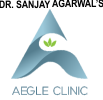- Camp Clinic : Monday to Friday : 7:30am - 9:30am & Evening : 5:30pm - 7:30pm
- Dhole Patil Clinic : Monday to Saturday 1:30pm - 4:30pm
DIAGNOSTIC SERVICES
Aegle Diagnostics offer a wide range of diagnostic services at our state-of-the-art center where we ensure that our patients get personalized care so their visit is made as comfortable as possible.
Our diagnostics include the following :
PATHOLOGY SERVICES:
- Aegle diagnostics offer a wide range of pathological tests under one roof. To ensure accuracy and timely test results we have a tie-up with NABL accredited Golwilkar Metropolis which is one of the most reputed labs in Pune.
ULTRASOUND:
- Sonography or Ultrasound, utilizes high frequency sound waves to obtain diagnostic images. Ultrasound diagnostic imaging technology is used to visualize internal organs, including the abdomen, blood vessels, fetus of pregnant women, superficial body structures and muscles of the body.
SERVICES:
- 3D/4D Real time Sonography.
- Whole body Color Doppler.
- Obstetric and gynaecology Sonography.
2D ECHOCARDIOGRAPHY:
- Echocardiography uses standard two-dimensional, three-dimensional, and Doppler ultrasound to create images of the heart. In this a transducer sends and receives sound waves which are reflected back thus producing pictures of the heart. These images appear in black and white and in color on the screen.
- From the pictures it is possible to measure the size of each part of your heart, to study motion and appearance of the valves and the function of the heart muscle and to determine if there are any abnormalities present.
- A Doppler echo is done in order to determine the speed and direction of the blood flow to the organs.
- 2D Echo is a very good tool to evaluate heart function, congenital heart disease, clots etc. It also helps doctors to evaluate blood flow through major arteries and veins, arms, legs and neck.
ECG:
- An electrocardiogram (ECG) is an electrical recording of the heart and is used in the investigation of heart disease. It is a graphic display of the electrical activity of the heart.
- It determines the rhythm and weakness in the heart muscles thus identifying damaged heart muscles. It is a useful tool to determine heart rate, rhythm, conduction abnormalities etc. An ECG may be done as part of a routine physical exam too.
TMT OR STRESS TEST:
- A stress test or exercise ECG helps physicians find out how well the heart handles stress. This test usually involves walking in a motor driven treadmill. As the body works harder during the test, it requires more oxygen and the heart has to pump more blood.
- The test can show if the blood supply is reduced in the arteries that supply the heart. A stress test translates the heart’s electrical activity into line tracings on paper.
- Stress test enables a doctor to design an appropriate regimen for the patients who are at a high risk of cardiovascular disorders. It is also a valuable tool to determine coronary artery diseases at an earlier stage.
CGMS:
- A continuous glucose monitoring system (CGMS) is an FDA-approved device that records blood sugar levels throughout the day and night. This device is fit on the patient abdomen where it measures the blood sugar continously for three to seven days. After the specified period of time the report of the patient is generated and required changes are made in the patients diabetes management plan. It is a very efficient tool to tackle patients with fluctuation in blood sugar levels and hypoglycemia problems. In case of a discripiency in the laboratory and glucometer readings, CGMS acts as a great tool in titrating ones line of treatment.
ABPM:
- Ambulatory blood pressure monitoring is a non invasive method of obtaining a blood pressure reading over a period of 24 hours where the patient is in their own environment and can continue his daily routine. Since the blood pressure is monitored over a 24 hour period it gives a much clearer picture of the of the cardiovascular status of the patient.
PFT:
Pulmonary Function test is a complete evaluation of the respiratory system of the patient. It is perform to determine the following:
- Diagnose lung diseases like asthama, bronchitis etc.
- Lung function for people who are at high risk of exposure to certain chemicals.
FUNDOSCOPY:
Fundoscopy is an examination of fundus of the eye including the retina and optic nerve, for screening Diabetic Retinopathy. Patients with diabetes should have an annual dilated fundus examination to check the retina for signs of diabetic retinopathy that could lead to permanent or difficult to treat vision loss.
Signs of Diabetic Retinopathy include bleeding, inflammation and lack of oxygen that can lead to permanent vision loss.
X- RAYS:
X- Rays are a type of Electromagnetic waves. X- Ray imaging creates pictures of the inside of your body. The most familiar use of X-Rays is checking for broken bones , diagnosis of bone or joint conditions and diagnosis of certain chest conditions.

Click here
for Clinic Appointment


